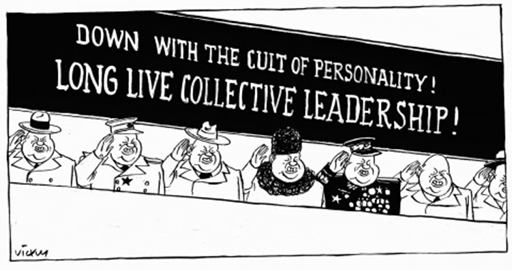4.1 Bringing together?
So let’s reflect a little more on how school leaders can work in this way.
Activity 8 Bringing together?
Read this article Valdivieso, P., (2020) ‘School leaders and inclusive education in Peru: A case study of principal leadership in an effective inclusive school [Tip: hold Ctrl and click a link to open it in a new tab. (Hide tip)] ’, International Journal of Innovative Business Strategies, 6(2), pp. 453–461.
Read from Leadership Strategies on p. 457 to the end of the article on p. 459. The acronyms in this extract are: Jose Antonio Encinas (JAE), Inclusive Education (IE) and Special Educational Needs (SEN)
As you read consider the following questions:
- In what way are the challenges identified by the principal political challenges?
- In what ways are the solutions about bringing people together and creating opportunities for communication?
- Are there strategies which surprise you or you feel are missing from this description?
- Thinking back to sections 1 & 2, do you feel that this is an example of inclusive leadership?
Discussion
In reflecting upon this paper you may have considered the nature of inclusive education under discussion. This seems a political issue from the outset. It is obvious that in the context of this school (or this research), inclusion is being seen as an issue related to Special Education and not as a broader issue related to the full range of people who experience marginalisation as part of the school community. This is despite saying that the school is shifting to a system which is responsive to the needs and characteristics of all students. Earlier in the paper, too, they frame professional development needs as being related to categories of disability, suggesting that the deficit view of the child’s needs is still at play in the setting. Having said this, there are clear examples of the principal trying to drive transformational change. She creates new processes, establishes new roles and prioritises collaborative ways of working. She encourages reflection, feedback and critical engagement with issues. She widens the network of people who have a voice within the institution, too, though it is noticeable that this does not include the children and their families. The children and families seem to be positioned as passive recipients rather than active participants in the leadership process.
There are many aspects of this Peruvian headteacher’s practice that echo the US case study mentioned in the discussion for Activity 7. As with the Peruvian head teacher, the US principal focuses upon the professional and leadership development of his staff. He sees this as a key part of building a collective sense of being fair and of being respectful. Both of these school leaders also see themselves as dealing with national and regional policy issues and see the importance of building professional and personal relationships with local organisations and community members. For the US principal, this includes having key community leaders serve on the School Advisory Council, to assist in preparing the annual school plan and budget; for the Peruvian leader it includes awareness talks and pedagogic strategies.
Both of these school leaders seem to be demonstrating some but not all of the characteristics and theoretical ideas identified in sections 1 & 2. It would be interesting to know if they would consider themselves to be inclusive leaders. But perhaps this should not worry us. As with all tales of leadership there are shortcomings we can identify. In reflecting upon these case studies (and the earlier readings in this course), it should be clear that inclusive leadership is not simply a top-down process, but one which recognises the contextual nature of the school. Afterall, it welcomes critique and reflection upon disagreement, difference, and conflict, and seeks to do this by building relationships between the many voices within its community.
If you want to explore these issues further there is a second course on Inclusive Leadership, Inclusive Leadership: Collaborating for professional development, which explores how Inclusive Leadership can work with communities of practice, collaborative enquiry and professional development to facilitate agency and create institutional change.

